Related Research Articles

Abolitionism, or the abolitionist movement, was the movement to end slavery. In Western Europe and the Americas, abolitionism was a historic movement that sought to end the Atlantic slave trade and liberate the enslaved people.
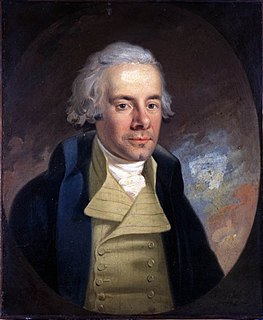
William Wilberforce was a British politician, philanthropist and leader of the movement to abolish the slave trade. A native of Kingston upon Hull, Yorkshire, he began his political career in 1780, eventually becoming an independent Member of Parliament (MP) for Yorkshire (1784–1812). In 1785, he became an evangelical Christian, which resulted in major changes to his lifestyle and a lifelong concern for reform.

Henry Dundas, 1st Viscount Melville, PC, FRSE, styled as Lord Melville from 1802, was a Scottish advocate and independent Whig politician. He was the trusted lieutenant of British Prime Minister William Pitt and the most powerful politician in Scotland in the late 18th century.

Robert Dundas, 2nd Viscount Melville was a British statesman, the son of Henry Dundas, the 1st Viscount. Dundas was the Member of Parliament for Hastings in 1794, Rye in 1796 and Midlothian in 1801. He was also Keeper of the Signet for Scotland from 1800. He was appointed a Privy Counsellor in 1807, a Fellow of the Royal Society in 1817, a Knight of the Thistle in 1821, and was Chancellor of the University of St Andrews from 1814. Melville filled various political offices and was First Lord of the Admiralty from 1812 to 1827, and from 1828 to 1830; his eldest son inherited his title.

William Wyndham Grenville, 1st Baron Grenville, was a British Pittite Tory politician who served as Prime Minister of the United Kingdom from 1806 to 1807, but was a supporter of the Whigs for the duration of the Napoleonic Wars. As prime minister, his most significant achievement was the abolition of the slave trade in 1807. However, his government failed to either make peace with France or to accomplish Catholic emancipation and it was dismissed in the same year.

Thomas Clarkson was an English abolitionist, and a leading campaigner against the slave trade in the British Empire. He helped found The Society for Effecting the Abolition of the Slave Trade and helped achieve passage of the Slave Trade Act 1807, which ended British trade in slaves.
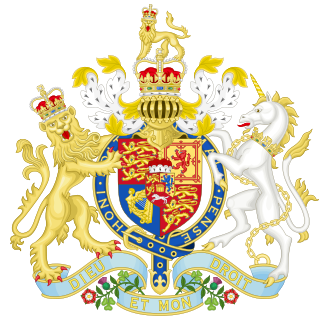
The Slave Trade Act 1807, officially An Act for the Abolition of the Slave Trade, was an Act of the Parliament of the United Kingdom prohibiting the slave trade in the British Empire. Although it did not abolish the practice of slavery, it did encourage British action to press other nation states to abolish their own slave trades.

Zachary Macaulay was a Scottish statistician, one of the founders of London University and of the Society for the Suppression of Vice, an antislavery activist, and governor of Sierra Leone, the British colony for freed slaves. He worked endlessly to end the slave trade and to Christianize and improve the world.
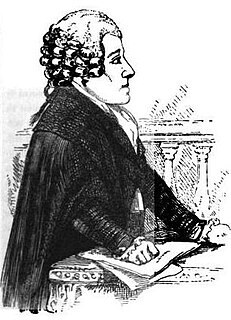
Robert Dundas of Arniston was a Scottish judge.

Stewart's Melville College (SMC) is an independent day and boarding school in Edinburgh, Scotland. Classes are all boys in the 1st to 5th years and co-educational in Sixth (final) year. It has a roll of about 750 pupils.

West Calder is a village in the council area of West Lothian, Scotland, located four miles west of Livingston. Historically it is within the County of Midlothian. The village was an important centre in the oil shale industry in the 19th and 20th Centuries. West Calder has its own railway station. The surrounding villages that take West Calder's name in their address - Polbeth, Addiewell, Loganlea, Harburn and Westwood - outline the area that this village encompasses, and they all have played an important part in the history of the village as well as West Lothian. The village is a 10-minute drive from Livingston, which is host to two large shopping centres. The village lies along the ridge above the Calder burn.
Sir Edward Knatchbull, 8th Baronet was a British politician and baronet.
Events from the year 1792 in Great Britain.
Henry Beaufoy was a British Member of Parliament.

In the United States, abolitionism, the movement that sought to end slavery in the country, was active from the late colonial era until the American Civil War, the end of which brought about the abolition of American slavery through the Thirteenth Amendment to the United States Constitution.
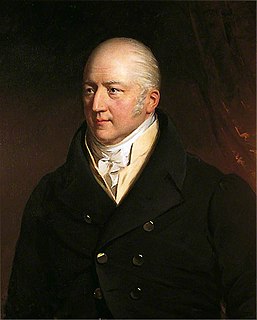
Joseph Marryat was an English West India merchant and banker, serving as an MP from 1808 until his death in 1824. He was a slave-owner and a strong opponent of abolitionism.
Henry Bright was a British Whig politician, MP for Bristol 1820–1830.

Dundas Street is a major historic arterial road in Ontario, Canada. The road connects the city of Toronto with its western suburbs and several cities in southwestern Ontario. Three provincial highways—2, 5, and 99—followed long sections of its course, although these highway segments have since been downloaded to the municipalities they passed through. Originally intended as a military route to connect the shipping port of York to the envisioned future capital of London, Ontario, the street today connects Toronto landmarks such as Yonge–Dundas Square and the city's principal Chinatown to rural villages and the regional centres of Hamilton and London.

The Melville Monument is a large column in St Andrew Square, Edinburgh, Scotland, constructed between 1821 and 1827 as a memorial to Henry Dundas, 1st Viscount Melville.
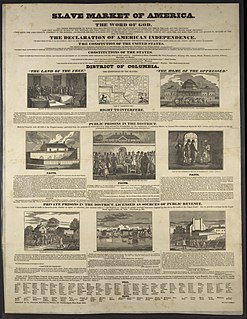
The slave trade in the District of Columbia was legal from its creation until 1850, when the trade in enslaved people in the District was outlawed as part of the Compromise of 1850. That restrictions on slavery in the District were probably coming was a major factor in the retrocession of the Virginia part of the District back to Virginia in 1847. Thus the large slave-trading businesses in Alexandria, such as Franklin & Armfield, could continue their operations in Virginia, where slavery was more secure.
References
- ↑ West Calder Slave Trade Petition, March 15, 1792, reported in the Edinburghshire log of 1792.
- ↑ "Henry Dundas and Abolition – The Missing Pieces" (PDF). Henry Dundas Committee for Public Education on Historic Scotland, Arniston House. Retrieved 17 October 2021.
- ↑ "House of Lords Journal Volume 63: 16 December 1830', in Journal of the House of Lords: Volume 63, 1830-1831 (London, [n.d.]), pp. 176-180". British History Online. Retrieved 22 October 2021.